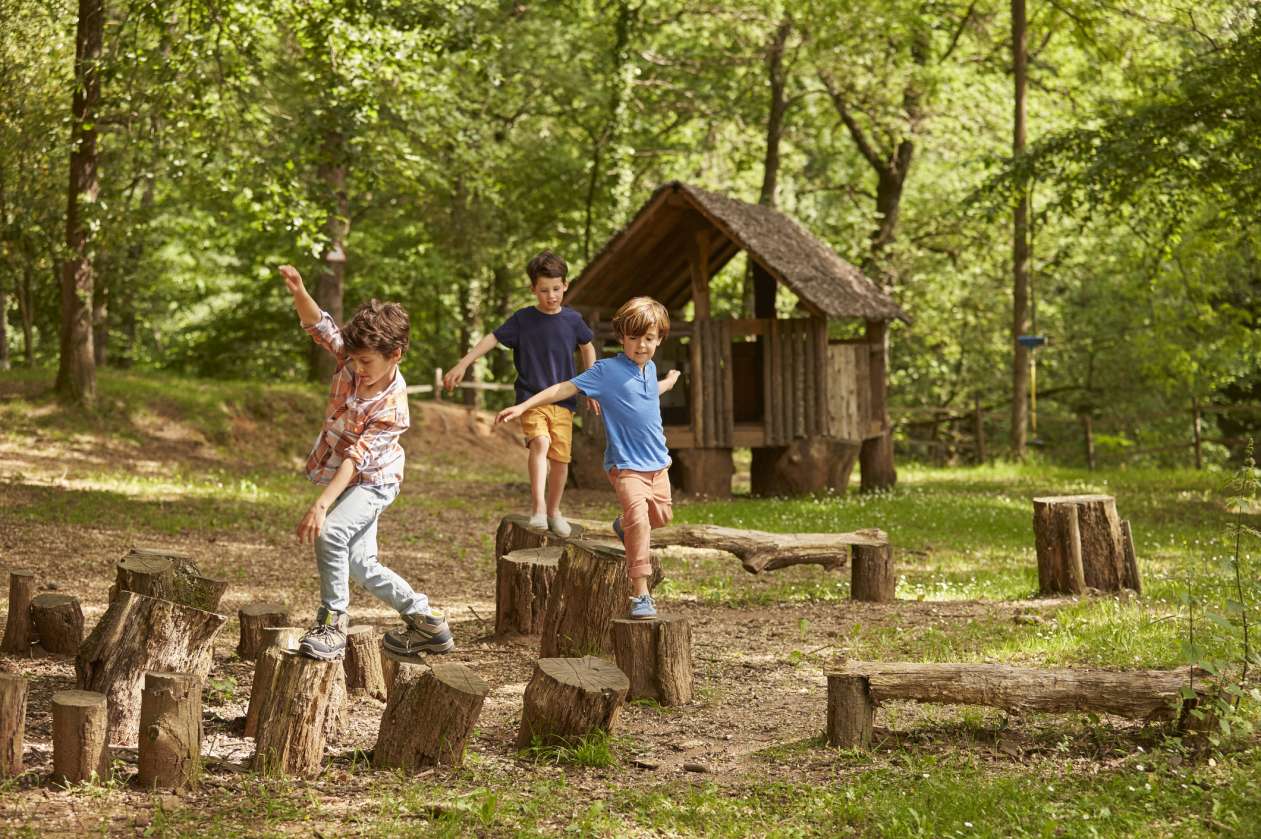
PE in the forest: Group activities to develop movement skills in the woods
Does your school have a nearby wooded area or forest? Use this space as an outdoor classroom to build fundamental movement skills.
Stay safe by setting clear expectations. It’s important to identify boundaries before entering the forest to ensure that all students understand the area that they must stay in.
Here are some ideas for physically active games in a forest or wooded area.
Follow the Leader
Choose a leader to lead classmates through an exciting walk through the forest. Encourage the leader to include certain elements such as:
Also in this series
PE during a pandemic: How to help your students focus on building skills
PE on the playground: 4 active games that use school playground equipment
PE on the playground: How to design an obstacle course
Encourage each new leader to travel to a different place in the forest where they can show off their skills.
If the kids need help to vary their movements, use prompts like, “Can you add in some balance poses?” “Try it with the other leg,” or, “Can you leap over the ditch?”
Log jumping
The forest or wooded area offers lots of rocks, roots, and stumps to jump on (and from!).
Review proper jumping and landing techniques with students and head to the forest to practice these skills.
You can prepare for or extend this activity with one of our jumping lesson plans for 5-8-year-old [PDF] students or for 8-12-year-old [PDF] students.
Shinrin-Yoku
Nature is also the perfect place to ease anxiety. Tap into this source of calm and relaxation by introducing your students to Shinrin-Yoku, a Japanese term that means “forest bathing.”
By introducing the Japanese name, instead of just telling students that you’re going outside, you will pique students’ curiosity and give the activity a fresh direction and purpose.
You can start with this narrated story appropriate for 6- to 12-year-old students to introduce kids to the concept of Shinrin-Yoku.
Quite simply, there are two goals to this exercise: walk slowly through the forest and breathe deeply.
- Go slow to notice all the little things around you: what can you smell, hear, and see?
- Practice deep belly breathing. Find a spot where you can sit and breathe for a few moments.
- Every once in a while, stop, sit, look up, feel the earth or the trees around you.
- Observe. Can you smell the forest air? Are there patterns on the leaves? Is there light coming through the canopy?
Shinrin-Yoku can become a healthy, relaxing routine for your class to get a much-needed brain and movement break in the day.
Scavenger hunt race
Print our ninja scavenger hunt checklist [PDF], establish appropriate safety boundaries, set a timer, and let kids loose in a race to check off all the items on the list before the time’s up!
Another fun list to print is Doing Good Together’s Nature Scavenger Hunt [PDF], or try this Nature Bingo printable [PDF] to hand out to groups or individuals. For older kids, this Nature Shapes & Patterns Scavenger Hunt may keep them busy and can provide an extra challenge.
Or you can create your own original version. Check out some of these great scavenger hunt ideas for inspiration.
You can also integrate art activities, inspire a nature collage with leaves and twigs, or bring a magnifying glass outside and explore underneath stumps and rocks.
More forest games
Play a forest game that allows students to connect to nature, such as Rainbow Walk, where one student chooses a colour and challenges the other children to find it in the forest. The first to see it picks the next colour.
For a more fast-paced game, play capture the flags. Give each team five or 10 “flags” (these can be any recognizable markers you have on hand in the classroom such as jump ropes, soft cones—even whiteboard markers!). Students then hide their flags within set boundaries for each opposing team to find.
At the start of the game, the opposing teams can send over a spy who can roam the other team’s space (but can’t take the markers). But spies can get tagged and sent to an identified “jail” area, such as a tree stump or large rock.
A second whistle signals the start of the second part of the game where all players can enter each other’s turf and collect flags, all while trying not to get caught!
Prisoners can also be freed by being tagged by one of their teammates. But they must return to their own area before trying to cross the boundary again.
Marta Orellana teaches upper intermediate grades in a North Vancouver elementary school, where PE is generally taught by classroom teachers rather than PE specialist teachers.





